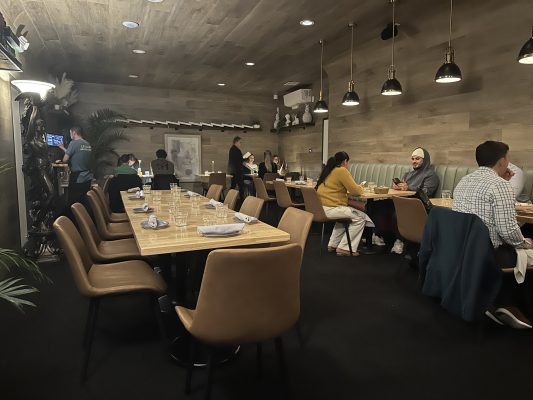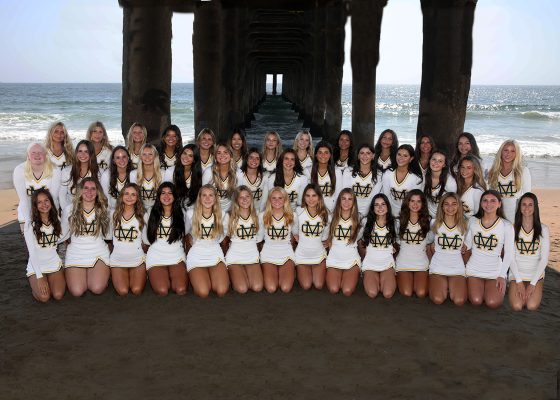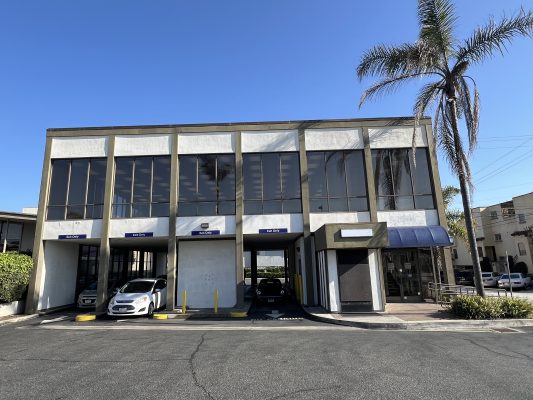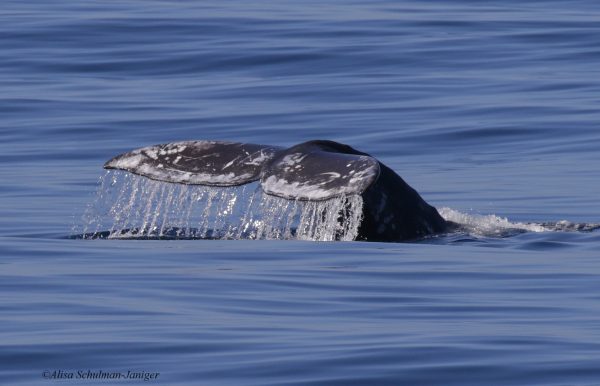
Hermosa Beach cut the ribbon on a new Community Center garden last week, just a few days after a city backhoe removed a privately maintained garden across the street on the city Greenbelt.
The Community Center garden replaces 2,000 square feet of the block long lawn that covers the north and east grounds of the former junior high school.

The garden the city removed was planted with city permission 13 years ago by Karen Bruns, who lives in the Marine Mobile Home Park, across from the Greenbelt.
All of the Community Center’s new plants are drought tolerant, California natives. Rainwater collected from the Community Center roof and gray water from the city’s “purple” water main provide the irrigation.

“The garden is a model for residents and represents Hermosa’s leadership in environmental sustainability,” Mayor Pete Tucker said at last Wednesday’s ribbon cutting.
The $30,000 garden was largely funded by the West Basin Water District, whose board member Carol Kwan noted that she has reduced her water bill to $35 a month by replacing the lawns at her Manhattan Beach home with California native plants.

Beth Crosse, co-chair of the Surfrider Foundation’s Ocean Friendly Garden program, said the Santa Monica Bay’s largest pollution source is storm drain runoff containing fertilizer and fungicides.
Over 70 percent of urban water usage goes to outdoor irrigation, according to the State Water Resources Control Board.
The Community Center garden was designed by landscape architect John Tikotsky.
Its rolling topography is meant to suggest the sand dunes the Community Center is built on, Tikotsky said. The garden’s three Catalina Ironwood trees, found in the wild only on the Channel Islands, will grow to the height of the Community Center. But most of the other plants are low level bushes and ground cover.
The ADA compliant footpath is a water permeable honeycomb plastic.
“In addition to water savings, the garden is a step toward protecting our environment,” Tikotsky said. “The colony collapse of beekeeper bees is beginning to occur among wild bees. The garden offers bees, hummingbirds and ‘beneficials’ (insects) like hover flies places to eat.”
“Their decaying bodies are what convert dead dirt to live soil,” he explained.
The plants were selected for their aesthetic appeal, climate sensitivity and tolerance for the high salinity content of the reclaimed water.
For the depressions, Tikotsky selected plants with “wet feet,” including Carex, a grass, and Juncus (popularly known as wire grass, though it is actually a rush).
On the mounds, he planted California irises and galvezia, a snapdragon whose red, tubular flowers attract hummingbirds.
Despite the approaching winter the galvezia were blooming and the barren areas will soon fill in. Tikotsky said the plants were well spaced to give them room to grow.
The garden is one of 15 CPR (Conservation, Permeability, Retention) gardens supported by the Surfrider Foundation’s Ocean Friendly Gardens program.

Greenbelt garden removed
Karen Bruns, a Cal Poly Pomona landscape architect graduate, began maintaining a 75-foot long stretch of the Greenbelt across from her mobile home in 2001.
Brun said her garden was also planted with drought tolerant plants, including geraniums, California Marshmallow, zucchini, tomatoes, figs, beets and broccoli.
A 2001 letter from then-public works superintendent Mike Flaherty states, “This letter to serve as confirmation that you do have permission to maintain the specific areas of the Green Belt across from your home.”

Flaherty, who has since retired, said recently, “At the time, a lot of people were planting trees on the Greenbelt for loved ones and volunteers went out with buckets and hoses to help with planting and irrigation. Ells (Freeman, the current public works superintendent) and I planted hundreds of trees. So it seemed appropriate to allow her to maintain the parcel across from her home.”

Bruns’ garden grew to be a small forest that served as a retreat for walkers and small animals and to screen the neighboring parking structure.
In October, Bruns received a letter from Freeman instructing her to “remove all your plants, shrubs, and other material from the Greenbelt within 30 days.”
In hopes of having the order rescinded, Bruns wrote to Ells and acting public works director Diane Strickfaden, “Both adults and kids enjoy wandering around the plants… Kids even do some insect searching for their school work… I’ve seen Japanese tourists sitting on the stumps, taking photos. Many enjoy the shade of the trees: the large-leaf ficus tree offers shade for many to eat a snack and sometimes grab a quick nap.”

A meeting between Bruns, Ells and Strickfaden failed to resolve the conflict.
Bruns was sent a second letter from the city advising her she had until November 21 “to remove the garden.”
Last Friday, the date the garden was to have been removed, it was still there. So city contractors went in with a backhoe.
Strickfaden said the backhoe was used to remove a stump and that the garden was torn out for a combination of reasons. They included Bruns’ failure to obtain Parks and Recreation committee approval for a garden on the public right of way, poor maintenance of the garden and verbal conflicts with the city’s contract landscape workers.
“The new plants will be consistent with what’s there [on the Greenbelt],” Strickfaden said. ER











